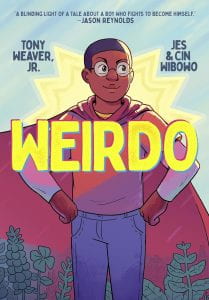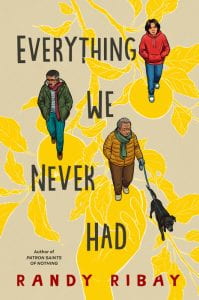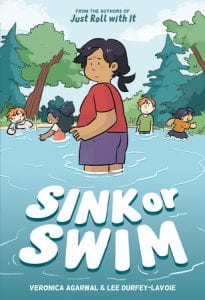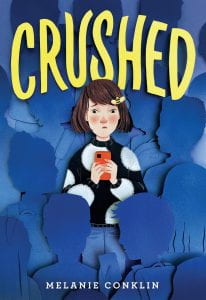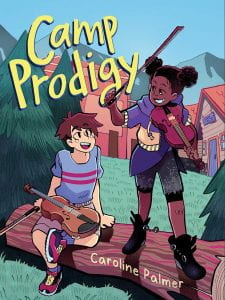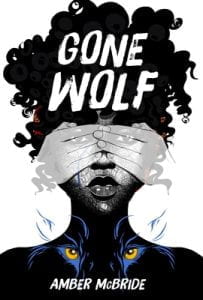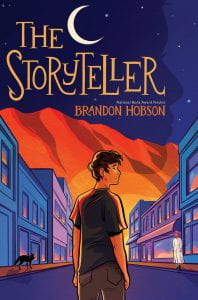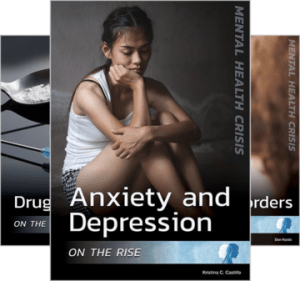 Schu, John. Louder Than Hunger. Candlewick Press, 2024. 978-1-536-22909-7. $16.97. 528 p. Grades 5-9.
Schu, John. Louder Than Hunger. Candlewick Press, 2024. 978-1-536-22909-7. $16.97. 528 p. Grades 5-9.
John Schu tells the fictional story of Jake, a middle school student who is very self-conscious of his appearance. He tries to control his feelings about his body by controlling his eating. But Jake spirals and continues to force himself not to eat, until he becomes critically malnourished. Schu shows readers Jake’s experience in battling anorexia nervosa, OCD, anxiety, clinical depression, and being admitted to residential treatment as well as out-patient treatment. This is an authentic novel about not only mental illness and the battles that those with them face, but the hope and power that those who push through the darkness experience.
THOUGHTS: This book belongs in every single middle school, high school, and public library. It is an authentic look at anorexia nervosa, anxiety, depression and OCD and will surely help many teens feel seen. While this book discusses some tough topics, it is written in such a heartfelt and genuine way that teens will undoubtedly enjoy it.
Realistic Fiction
Louder Than Hunger is a novel in verse told by main character Jake who is struggling through lots of things in his life. His parents always are fighting, his school life is frustrating him, and his favorite person in the world, his grandmother, seems tired all the time. All of this makes Jake want to just disappear, especially when he has a Voice in his head that sometimes agrees with that. There are times that Jake is able to control that Voice, but other times it overwhelms him and he gives in. It can be so loud it drowns out everything around him. It even drowns out the sound his stomach makes because he is so hungry.
THOUGHTS: This was really hard to read at times. Jake’s story is painfully hard to read, so definitely know the triggers before recommending this book or giving it to a reader. However, it is beautifully written, and the author’s note made me tear up when I read it.
Realistic
Novel in Verse
Schu, John. Louder Than Hunger. Candlewick Press, 2024. 978-1-536-22909-7. 516 p. $18.99. Grades 6-12.
13-year-old Jake Stacey finds joy in rollerblading, theater, and spending time with his grandmother. But the transition from elementary to middle school has been very difficult for him. Suddenly, he becomes the weird kid, the one that everyone picks on. As the bullying becomes worse, Jake attempts to take up less space, hoping that will make him invisible to his bullies. An internal VOICE takes over Jake’s thoughts, encouraging him to restrict his eating or no one will ever love him. His eating disorder combined with depression and obsessive-compulsive disorder lands him in Whispering Pines, a residential treatment facility, where the VOICE fuels his disorder even more. He refuses to participate in treatments, wishing he could be with his grandmother driving around in her red car and singing showtunes instead. His doctors warn him he may end up with a feeding tube if he doesn’t start eating. His grandmother begs him to “take care of her boy.” Jake wants to, but the VOICE is in complete control. When his grandmother ends up in the hospital with pancreatic cancer, Jake decides he must quiet the VOICE, embrace self-acceptance, and recognize the power of love and support in healing.
THOUGHTS: Inspired by Schu’s personal experiences, this novel offers an authentic and deeply moving portrayal of a young person’s path to recovery. The author incorporates varied fonts, text sizes, and shapes to enhance the depth and meaning of the verse poetry, bringing Jake’s story to life with visual impact. The back of the book includes an author’s note and resources for readers who may be struggling with depression, eating disorders, and obsessive-compulsive disorder. This is a valuable addition to middle grade and young adult collections, shedding light on the reality that eating disorders affect boys as well as girls.
Novel in Verse
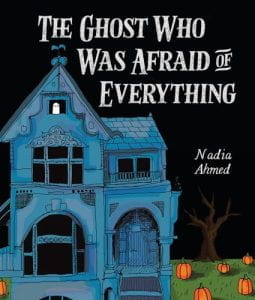 Ahmed, Nadia. The Ghost Who Was Afraid of Everything. Beaming Books, 2024. 978-1-506-49511-8. Unpaged. $18.99. Grades PreK-1.
Ahmed, Nadia. The Ghost Who Was Afraid of Everything. Beaming Books, 2024. 978-1-506-49511-8. Unpaged. $18.99. Grades PreK-1.
